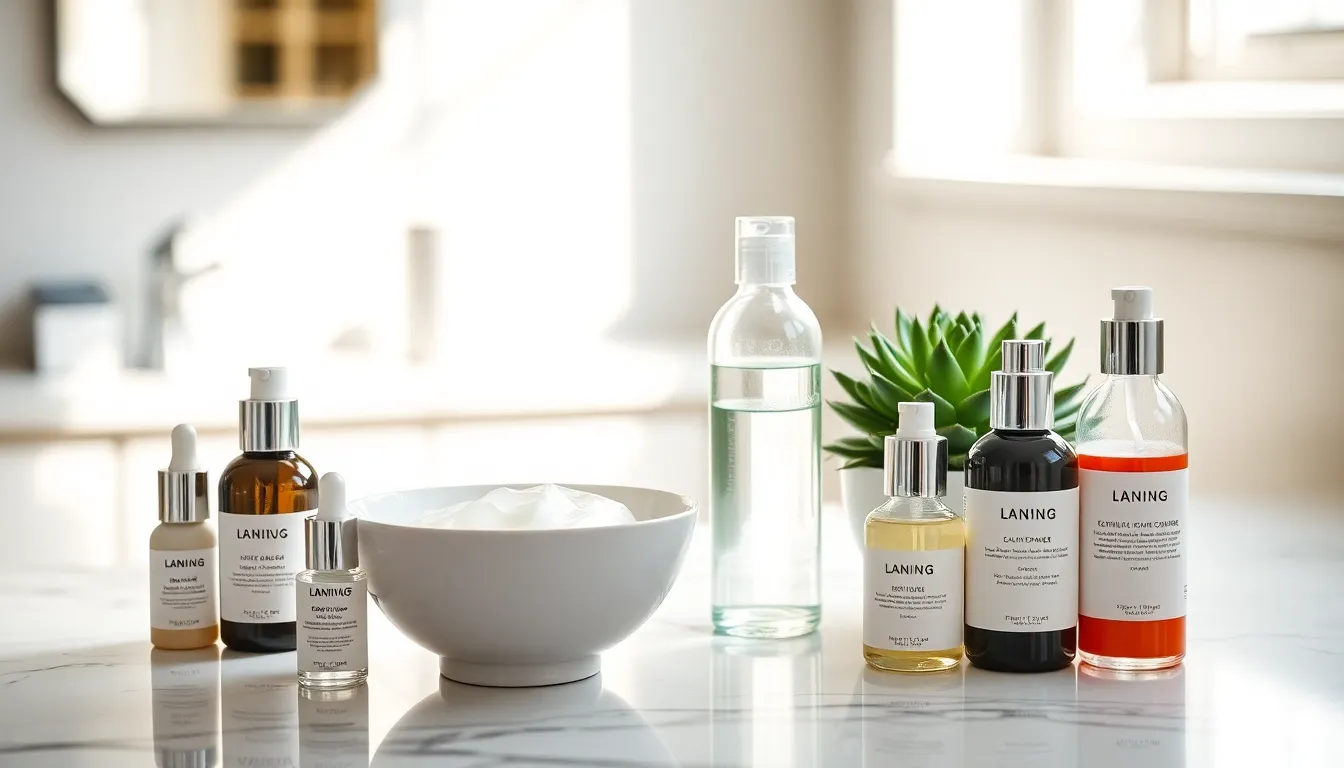Have you ever found yourself staring at a shelf full of skincare products, completely overwhelmed? You’re not alone. Many people dive headfirst into the world of skincare only to come up for air gasping at the complexity. But fear not. Crafting a beginner basic skincare routine doesn’t have to be rocket science. In fact, with the right knowledge and a touch of humor, you can navigate the path to radiant skin like a pro. Here, we’ll break it down, no fancy jargon required. Just practical, straightforward advice that will have you saying goodbye to confusion and hello to clarity.
Table of Contents
ToggleUnderstanding Your Skin Type

Identifying Skin Types
Before diving into skincare products, it’s crucial to understand your skin type. Is it oily, dry, combination, or sensitive? Each type has its quirks, and knowing where you stand can save you a lot of headaches, and money.
- Oily Skin: Often shiny, this type produces excess sebum. Look for products labeled ‘oil-free.’
- Dry Skin: If your skin feels tight and looks flaky, this is your category. Rich creams and hydrating serums will be your best friends.
- Combination Skin: This is the classic two-for-one. Your T-zone may be oily while your cheeks lean dry, so you’ll need a balanced routine.
- Sensitive Skin: If your skin gets red or irritated easily, opt for gentle, fragrance-free products.
Importance of Knowing Your Skin Type
Understanding your skin type helps tailor your skincare routine, allowing you to choose products that actually work for you. Using the wrong product can lead to clogged pores or further irritation, essentially turning a skincare routine into a skincare nightmare. Get to know your skin: it’s the first step in the right direction.
Essential Steps in a Basic Skincare Routine
Cleansing: The First Step
Cleansing is the backbone of any good skincare routine. It removes dirt, oil, and leftover makeup from the day’s adventures. Think of it as giving your skin a fresh canvas to work with.
Choosing the Right Cleanser
Not all cleansers are created equal. If you have oily skin, a gel-based cleanser might be your best choice. For dry skin, a cream-based cleanser will provide much-needed hydration. For combination skin? Consider a gentle foaming cleanser that strikes a balance, kind of like a peace treaty between your T-zone and cheeks.
How to Properly Cleanse Your Face
Here’s a pro tip: always use lukewarm water when cleansing. Hot water can strip your skin of its natural oils, while cold water won’t do much to help get the product in deep. Massage the cleanser into your skin in circular motions for about 30 seconds before rinsing. Your skin deserves that little bit of extra love.
Moisturizing: Hydration is Key
After cleansing, moisturizing locks in hydration. Even oily skin types need a good moisturizer to help maintain balance. Think of it as a big hug your skin truly appreciates.
Selecting a Moisturizer for Your Skin Type
Similar to cleansers, moisturizers need to be chosen based on skin type. Lightweight gels for oily skin, thicker creams for dry skin, and balanced options for those with combination skin. Remember, choose a product that feels comfortable on your face.
The Role of Sunscreen in Skincare
Why SPF is Non-Negotiable
Sunscreen is like your skin’s personal bodyguard. It protects against harmful UV rays and helps to prevent premature aging. Think those sunspots are a badge of honor? Spoiler alert: they’re not.
Choosing the Right Sunscreen
Look for broad-spectrum sunscreens with an SPF of at least 30. Whether it comes in a cream, gel, or spray, find one that suits your skin type and daily activities. And remember, reapply it every two hours, especially if you’re out in the sun. Don’t skip this step: your future self will thank you.
Additional Skincare Practices for Beginners
Exfoliation: How and When to Do It
Exfoliating helps remove dead skin cells, revealing fresh, glowing skin underneath. But beware, over-exfoliating can lead to irritation. Aim for 1-2 times a week, depending on your skin type. Choose between physical exfoliants (scrubs) or chemical exfoliants (acids like AHAs/BHAs).
Using Serums and Treatments
Serums can provide extra benefits, targeting specific concerns such as acne, pigmentation, or fine lines. Look for serums that address your skin’s needs. Just remember, a little goes a long way.
Tips for Maintaining a Consistent Routine
Setting Realistic Goals for Your Skin
Change doesn’t happen overnight. Setting small, achievable goals is important to keeping frustrations at bay. Maybe aim for a week of sticking to your routine before expanding your goals.
Tracking Your Progress
Keep track of what products you use and how your skin reacts. Noting changes can help you understand what works best and when to adjust your approach. This can be through a simple diary or even a skincare app. You’ll be amazed at what a little documentation can do.



